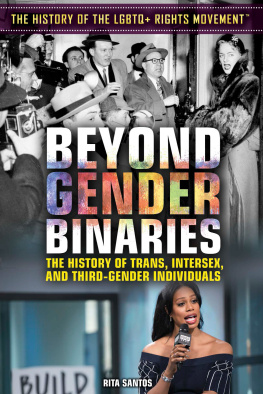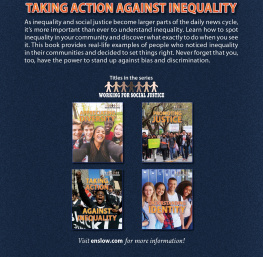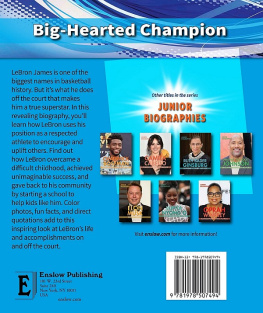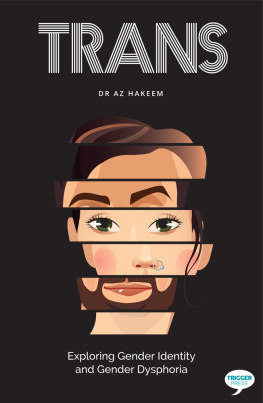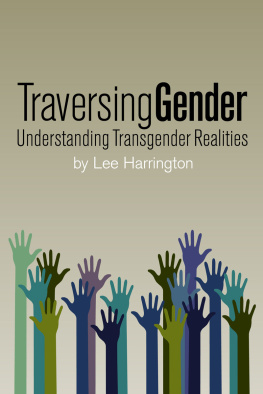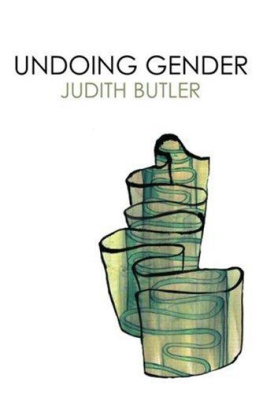- CHAPTER ONE
BRAZIL: A LAND OF CONTRADICTIONS - CHAPTER TWO
NATIVE AMERICANS GO FROM BERDACHE TO TWO-SPIRIT - CHAPTER THREE
POLYNESIAN TRANSGENDER POPULATIONS - CHAPTER FOUR
THE THIRD REICH - CHAPTER FIVE
TRANSGENDER AMERICA - CHAPTER SIX
HIJRAS - CHAPTER SEVEN
THE FUTURE IS NONBINARY
Published in 2019 by The Rosen Publishing Group, Inc.
29 East 21st Street, New York, NY 10010
Copyright 2019 by The Rosen Publishing Group, Inc.
First Edition
All rights reserved. No part of this book may be reproduced in any form without permission in writing from the publisher, except by a reviewer.
Library of Congress Cataloging-in-Publication Data
Names: Santos, Rita, 1985- author.
Title: Beyond gender binaries : the history of trans, intersex, and third-gender individuals / Rita Santos.
Description: New York : Rosen Publishing, 2019. | Series: The history of the LGBTQ+ rights movement | Includes bibliographical references and index. | Audience: Grades 7-12.
Identifiers: LCCN 2017019683 | ISBN 9781538381267 (library bound) | ISBN 9781508183075 (pbk.)
Subjects: LCSH: Transgender peopleHistoryJuvenile literature. | Intersex peopleHistoryJuvenile literature. | Sexual minoritiesHistoryJuvenile literature.
Classification: LCC HQ73 .S26 2018 | DDC 306.76/8 dc23
LC record available at https://lccn.loc.gov/2017019683
Manufactured in the United States of America
On the cover: Shown here are Christine Jorgensen ( top ), who became well known after her gender affirmation surgery was announced in 1952, and actress Laverne Cox ( bottom ).
CONTENTS
CHAPTER ONE
BRAZIL: A LAND OF CONTRADICTIONS
CHAPTER TWO
NATIVE AMERICANS GO FROM BERDACHE TO TWO-SPIRIT
CHAPTER THREE
POLYNESIAN TRANSGENDER POPULATIONS
CHAPTER FOUR
THE THIRD REICH
CHAPTER FIVE
TRANSGENDER AMERICA
CHAPTER SIX
HIJRAS
CHAPTER SEVEN
THE FUTURE IS NONBINARY
INTRODUCTION
S ome people use the terms sex and gender interchangeably, but they refer to two different things. In biology, sex refers to the physical being of a person. The most common types of bodies have either male or female reproductive systems, so some would take this to mean that ones sex must fit one of the binary categories. However, some people are intersex and have reproductive systems that dont fit what is typically categorized as male or female, so these people dont fit into the male/female binary in a biological sense.
Gender refers to how we feel about ourselves on a mental level. Binary thinking suggests that there are only two genders: male and female. However, human psychology is much more complicated than this either/or scenario suggests. Much investigation has led scientists to believe that gender is really more of a spectrum. People can fall anywhere along this spectrum at or in between male and female psychological identities, or they may feel that their identity doesnt fit into a spectrum that relies on feminine or masculine characterizations.
To complicate matters further, signs of gender are based on culture, not biology. While people signify gender with their hairstyles or clothes, those signals come from the meaning society places on those things, and those interpretations change all the time. This signaling is called gender presentation, and for many people, presentation is a way of showing gender identity.
But not everyone attempts to convey gender identity through clothing. Some people may prefer to wear traditionally feminine clothes although they identify as a male or a genderless individual. These are gender-nonconforming or nonbinary actions because they present gender that doesnt match societys expectations. Think of clothing like a uniform: wearing a lab coat and a stethoscope doesnt give a person a deep knowledge of medicine, but it can alert other people that this person has received special training that can be useful in certain situations. In the same way, clothes do not give the wearer a gender, but they can tell others how the wearer relates to gender.
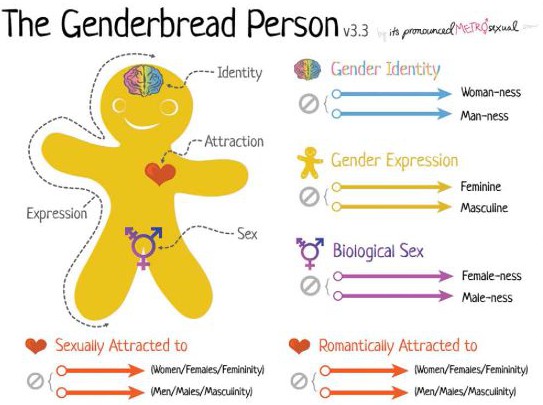
This visual representation of sexual and gendered identities represents the various gendered parts of a persons identity. But it doesnt account for nonbinary people.
For cisgender people, their sex matches their gender. Transgender, or trans, people are aware that some aspect of their gender, gender presentation, and/or sex does not match. Some trans people, sometimes referred to as transsexual, opt to have gender affirmation surgery. Other transgender people dont feel the need or want to have gender affirmation surgery.
Many cultures around the globe have always had nonbinary views of gender. They have approached this phenomenon in positive or negative ways, and these attitudes have produced many historically significant moments. However, separating the history of transgender and nonbinary people from that of gay people isnt always easy. It was only recently that terms to describe the transgender experience came into existence and came to be widely used. It was often the case that transgender people were incorrectly labeled as being homosexualbut even that word wasnt introduced until the late nineteenth century.
The lack of appropriate labeling does not erase the historical examples of nonbinary individualsit only indicates that anthropologists need to know what to look for. In American history, for example, there are several documented cases of women who presented as male to fight in the Civil War and who then continued to do so after the war ended. The clearly defined gender roles of post-Civil War America allow anthropologists to confidently theorize that some of these women were actually transgender men. But for cultures and historical periods in which genders were less clearly defined, finding those who did not fit into standards of gender or sex normativity can be harder.

I n the sixteenth century, Portugal colonized the many indigenous tribes that make up what is now known as Brazil. The Portuguese sent almost four million enslaved Africans to Brazil to work on sugarcane plantations between the seventeenth and eighteenth centuries. These enslaved people, who would eventually win their freedom, brought their own culture and traditions with them. The intermixing of the indigenous population, the Portuguese, and the Africans created a mixed ethnicity known as the Pardo. The size and ethnic diversity of the country mean that representations of gender change not only between geographic areas, but also between groups. While some areas of the country are accepting of third-gender individuals, many are not.
TRAVESTIS IN BRAZILIAN CULTURE
Gender roles are strictly enforced in Brazil. An important part of gender politics in Brazil stems from its colonial caste system, the means of controlling the enslaved population, plantation overseers, and even free families. This system was established during colonial slavery, which took place from the sixteenth century until the late nineteenth century, but it contributed to the rigidity of gender in Brazilian society long after slavery was abolished.
Next page
